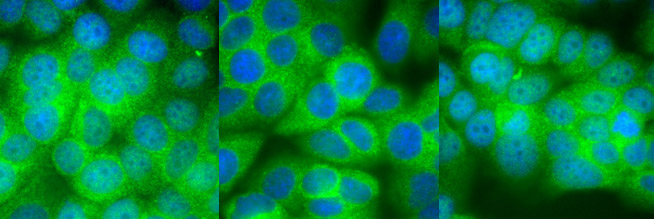

A variety of human malignancies show loss of a critical region
in chromosomal band 13q14.3 that harbors a tumor suppressor mechanism.
In more than 50% of patients suffering from B-cell chronic lymphocytic
leukemia (B-CLL), the most common leukemia of the western world, this
region is deleted. Despite extensive efforts from a number of labs, the
molecular nature of this mechanism has proven elusive. The region
contains long non-coding RNA genes, micro-RNA genes and multicistronic
transcripts. We have recently been able to show a complex epigenetic
regulatory mechanism in this region which involves DNA-methylation,
asynchronous replication timing and monoallelic expression. This
epigenetic mechanism can explain some of the genetic peculiarities
observed in patients. What we are currently doing is to elucidate the
intricacies of the regulatory mechanism characterize the molecular
function of the candidate tumor suppressor genes in the critical
region. With the insights gained, we hope to impact not only on the
diagnosis of B-CLL patients but also open new avenues for treatment
strategies.
![]()
How does the microenvironment support leukemic cells?
Malignant cells of patients suffering from B-cell chronic lymphocytic
leukemia (B-CLL) accumulate in the lymphatic organs and peripheral
blood and finally result in the failure of the immune system. However,
if the malignant cells are cultured in vitro, they rapidly undergo
apoptosis unless they are supported by non-malignant stroma cells. This
suggests an intimate interaction of the leukemia cells with their
microenvironmant and an essential dependance on survival signals from
the supporting cells. In a systematic approach, we want to characterize
the delicate interplay of these anti-apoptotic signals which have been
discovered to date. Even though each of these signals prolongs the life
of CLL cells in vitro, none of them can alone substitute the
anti-apoptotic effect that the stromal cells have on the leukemic cells
in vitro. If we are able to describe this crucial balance of supporting
signals and identify its central nodes, these could be directly
targeted in the patients using low but effective doses of compounds,
some of which are already clinically established.